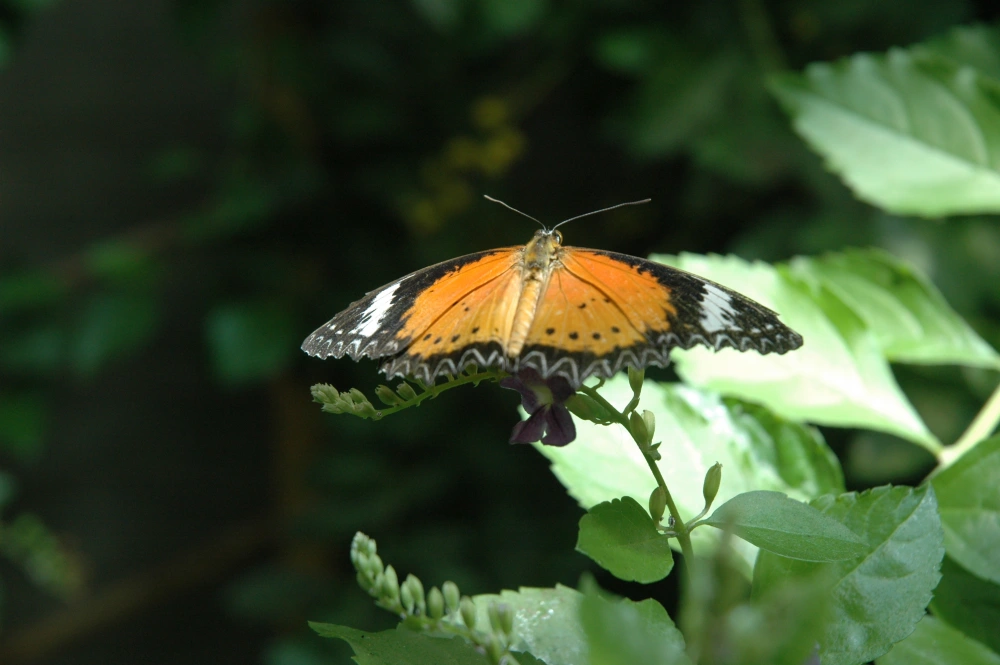By Barbara Kessler
Green Right Now
We feed birds in the winter. But Americans have not been as aggressive about feeding butterflies in the summer.
As butterflies lose ground to agriculture and global warming, we can do more to help prop up their populations.
The best way, of course, is to supply them with native flowers for your area. Plant a variety of colors and shapes — bright red and purple flowers rich in nectar in trumpet and cone shapes with sturdy “landing pads” — and you will see butterflies gravitating to your yard from spring through summer. Love the look of nature? Get really saavy and plant the vines and vegetation that caterpillars need also.
You can supplement the floral menu with some other things butterflies can use, even now if your yard is still a bit short on native blooms:
- When you have leftover oranges, lemons or melons that have gone too soft for your use, cut them in half or into slices and place them on a dish for butterflies to feed on. If you can elevate the food on some sort of stand or post in the garden, you’ll avoid simply attracting ants.
- Create a mud pot in your native flower garden. Butterflies will “drink” from it, to obtain water and the minerals they need, according to the Pollinators Project, a non-profit group working to make the world a friendly place for bees, butterflies, bats, hummingbirds and other pollinators that nature needs. Shallow water baths or a dripping water-plant arrangement also is attractive to butterflies.
- Consider leaving a few native “weeds” alone if they’re flowering especially. Don’t use pesticides or herbicides. Exposure to these chemicals can be fatal for bees and butterflies visiting your garden; and you will be deprived of their beauty and also their pollinating services, which could negatively affect any vegetable gardens in the vicinity as well.
- Replace turf, which adds little to the web of nature, with flower beds. This can be challenging. Many grasses, such as bermuda, are persistent. Remove the grass effectively by solarizing or digging it out, then mulch the bed and introduce the flowers. You can plant young plants in the spring or fall. You can also scatter native mixes of seeds in the fall, covering them lightly with soil. Reserve an area for milkweed and you’ll be helping the Monarch Butterfly, whose habitat has been eroded by agriculture and pesticide use in recent decades.
- Urban dwellers can join in. Even if your backyard consists of an apartment patio, you can do your part by planting a helpful container garden, and perhaps a shrub or two in pots.
Want to know more? You may want to visit a butterfly exhibit, where you can see and learn about how butterflies connect the dots in nature. The Butterfly Website maintains a world wide list of butterfly houses from South Africa to South Dakota open to the public.
Ready to start your own butterfly habitat? See these resources:
- Planting Guides for all areas of the country, from the Pollinator Project.
- Native Flowers for New York State , many of these will work in New England through the Mid-Atlantic region, from the Pollinator Project.
- Native Plants for the Southeast U.S., from the U.S. Fish and Wildlife Service
- Butterfly Gardening in Texas, by the Texas Agricultural Extension Service at Texas A&M University
- How to Attract Butterflies with a Garden Planter, from The Butterfly WebSite.
- Create a Monarch Way Station, to help sustain and save this species from extinction, from the Monarch Watch website run by the Kansas Biological Survey at the University of Kansas.
Copyright © 2020 Green Right Now
